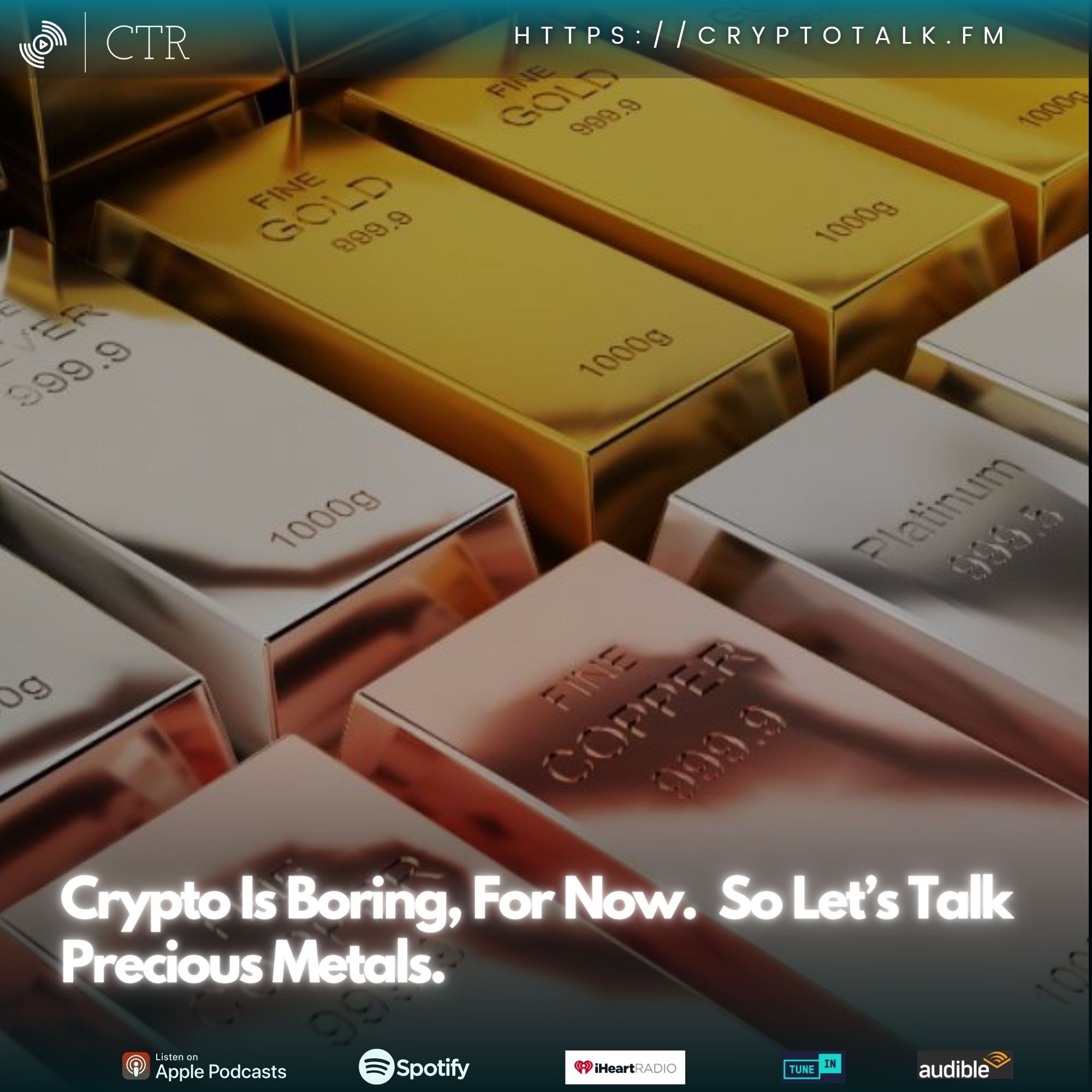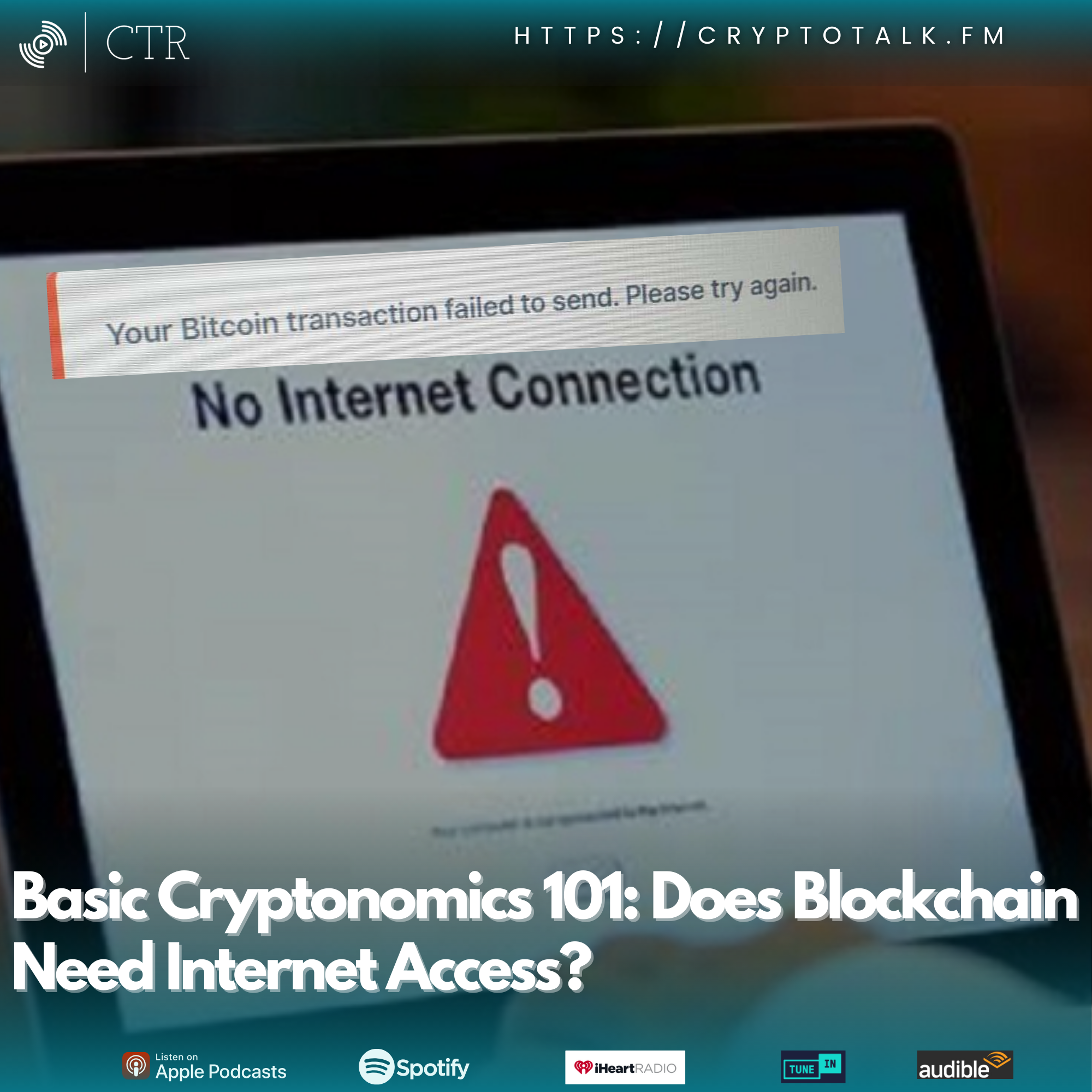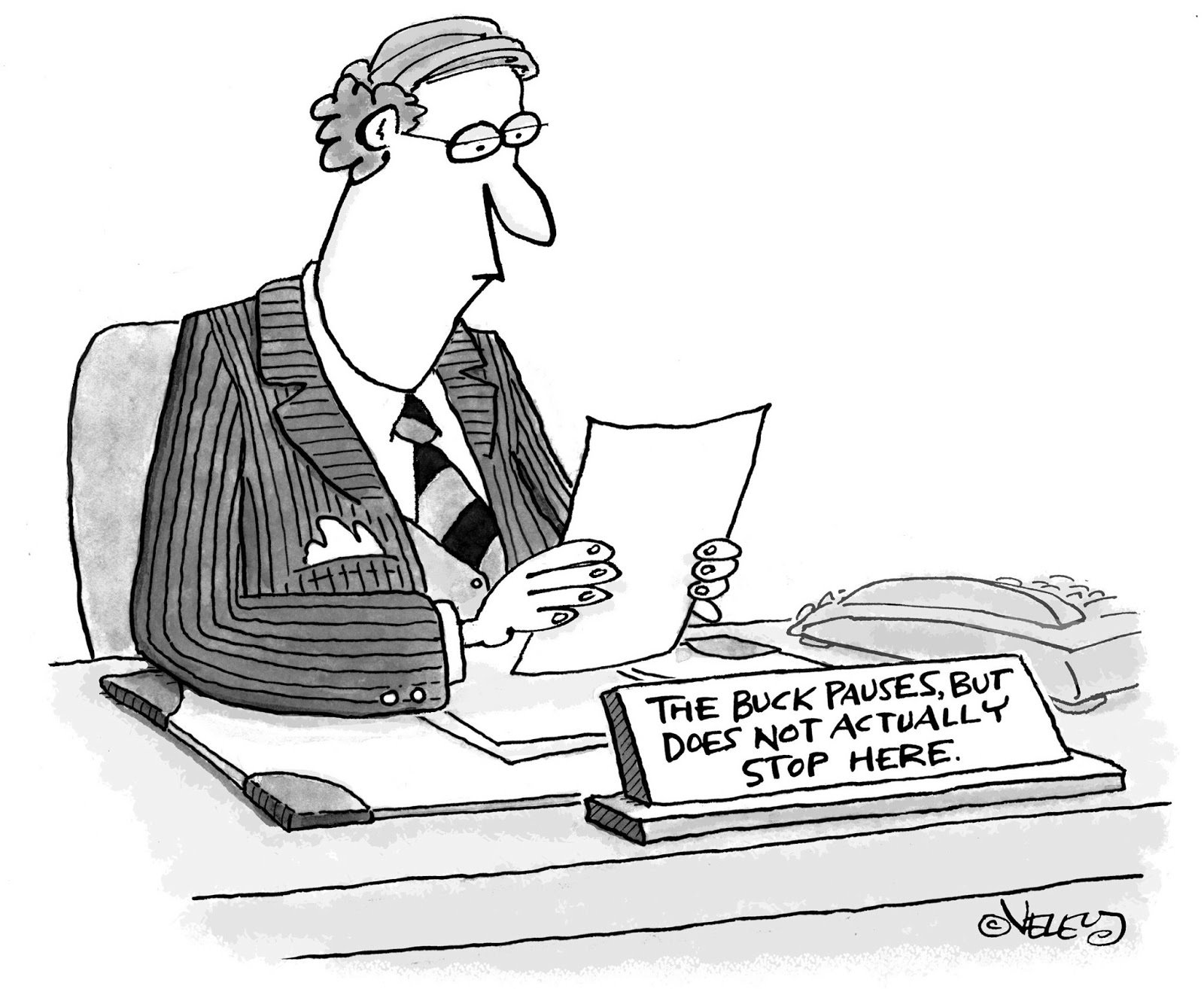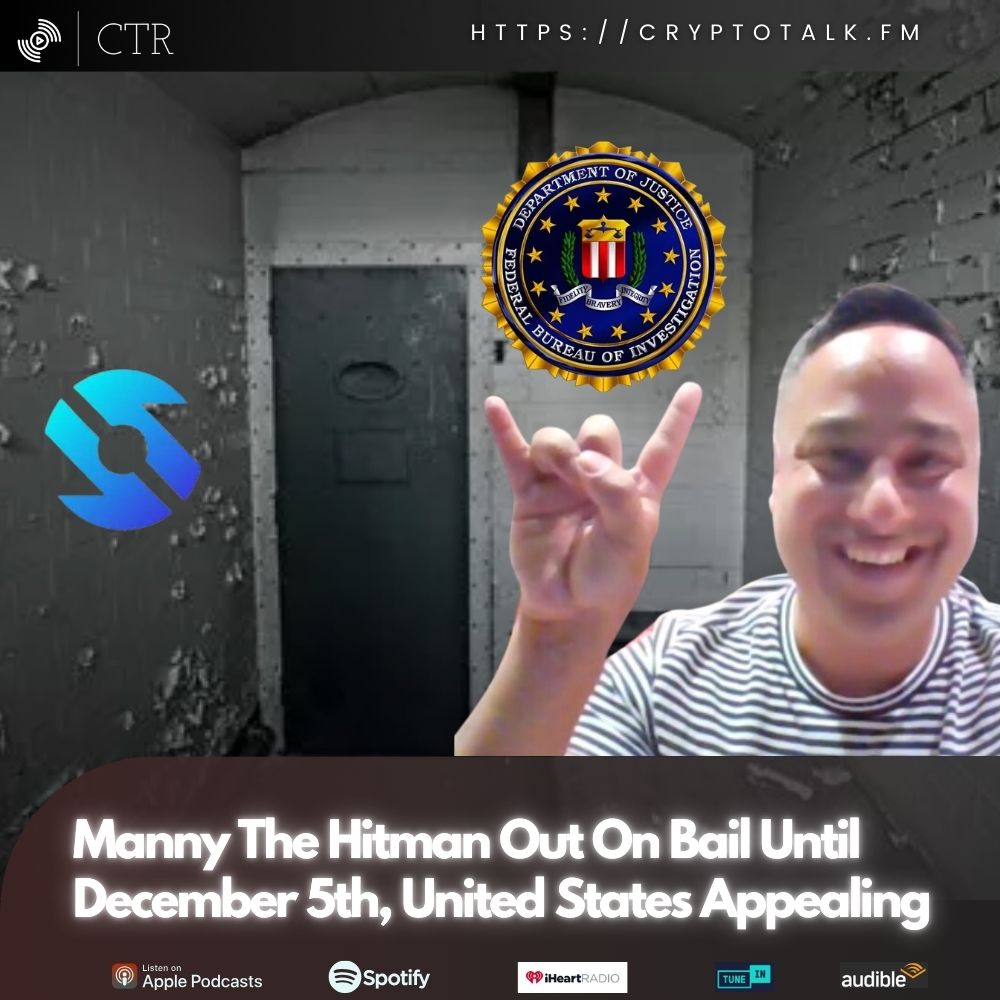[00:00:01] Welcome to Crypto Talk Radio, the podcast for everyday investors like you. Visit us on the
[email protected] and now here's your host, Leister.
[00:00:13] Thank you for that, Bailey. And welcome everybody out there in Crypto Talk radio
[email protected]. wow. Crypto is so boring. Today in particular, it's boring, it's dull. I was looking around and I'm like, geez, that's it. The Ripple cto, one of the battle of the beards dudes, he's out and that's a, that's supposed to be breaking news. And other than that, there's this random web3 wallet and it'll allow access to your assets and, you know, self custody and all the same things we've been hearing. Nothing's really changed, nothing's really exciting, which maybe that's not a bad thing. But it means today's episode's going to take a little bit of a twist because I need to make sure that I have a topic that's worth talking about, but general crypto topics are not worth talking about from my lens. So I will not be talking about general crypto topics because there's not really much that's worth it. I mean, a lot of these are just basic things.
[00:01:12] There's nothing that's exciting, there's nothing that's enticing, there's nothing that's energizing. So I will be skipping a lot of these things.
[00:01:21] So I figured we're going to do something a little bit different. There is a news bit that kind of triggered me to do this. So I'll talk about that one real quick. Then I'll go to the topic that is different. It's related, but it's different.
[00:01:34] You might have heard even some people talk about it, but not like I do. You know, let's get into it and try to follow if you can. If you can't, reach out and we'll help you the best that we can do.
[00:01:54] CoinDesk.com let's go ahead and zoom out to the month chart and we'll go ahead and start with bitcoin, because why not?
[00:02:01] If you've noticed and you listen for a while, welcome back. If you're new, welcome. But if you've noticed, Leister Critters FM said bitcoin is middling. It's in this middling range and doesn't seem to want to get out of the range. And I said this is kind of abnormal and we should be seeing runs and we're not seeing runs. Here you are. It's right in that middle still in the same range that it's been for a long time, the 110, 120 grand range. There are people out now that are saying what we're seeing. What, what Leister was telling you, what we're seeing is abnormal. We should not be seeing bitcoin sitting like this. Bitcoin should easily be around 140 by now. I don't know that I would go that high, but it's certainly being in that range for so long again is unusual.
[00:02:50] It's not like it hasn't happened before, but for this period of time, given the sentiment changes, given all the things that happen, I would consider it unusual myself personally, I would expect that bitcoin by now should have broken out of that range and has not done so. Then when I contrast that with Ethereum. And of course Ethereum was able to breach its all time high recently, but then is right back down to the lower levels. Over the past 24 hours, a low of almost breached down to the 3900. It's about 4100 bucks on the low end and about 4200 bucks on the high end. Currently right about 4150 ish. So this is after the run to 4800. So the pump didn't last, didn't sustain. But because Ethereum is so low tells me the bitcoin is either money's gonna flow that way or it won't.
[00:03:44] I don't know exactly what the answer is.
[00:03:47] I will say that it's unusual to see such middling behavior for so long after such strong sentiment shifts. Recently I don't know what it means, but as a result, cryptocurrency is boring because I will blame bitcoin, I will blame Ethereum because they're boring. It's if you don't have fun runs on Ethereum in particular, nothing else is going to run either.
[00:04:13] And we have to measure what that is. I actually saw Da Vinci Jeremy. He's kind of flip flopping now. You know, he's the bitcoin guy. And then at one point he's like, yeah, bitcoin's gonna be a million bucks.
[00:04:24] And then recently he did a video, he's like, is this the top? And then he's like, oh, it's going down. Even he doesn't know, right? So I know he's doing the education thing, that's his business.
[00:04:36] But I'm telling you, if you watch the frequency videos, I'm Telling you he doesn't know either. He has no clue. He's just like everybody else. He doesn't know. He doesn't know and he doesn't understand specifically why the behavior is what it is.
[00:04:53] So I can't give you any advice because I, I've been saying this for weeks. It's like, it's odd that it's middling for so dang long.
[00:05:02] You still can't go wrong with it per se. But is it a right buy time? I don't know because I have no idea. I said 80,000 seemed realistic to me. I didn't think it would go too much lower than that. But who knows, I might have that wrong. Maybe it goes lower, maybe it never hits 80.
[00:05:17] It's just weird.
[00:05:20] So I can't guide because I have no idea why it's taking as long as it is to get any sort of momentum. Positive.
[00:05:28] My news update is around JP Morgan Chase, bank of America coming out, mentioning that there's allegedly going to be a crunch supply crunch on copper. So this goes to the precious metal slash, rare metal. Copper is less rare, more than precious versus rare. And you might say, well, how is copper rare? How is it precious?
[00:05:52] Because it actually does have a finite supply. Believe it or not, the United States recently stopped or announced that they were going to stop minting copper, you know, pennies.
[00:06:05] And so what does that mean? Well, it means that we would not have pennies in circulation as far as copper goes. But raw, the pennies are not raw copper.
[00:06:18] So raw copper is still a precious metal of a form. Same with palladium, same with platinum, same with gold, same with silver. And there are markets because the mining of these metals get difficult at times, which, that's what causes a lot of it.
[00:06:38] And then there's a hoarding, there's a rush towards it and a hoarding. So they're speculating that the price of copper is scheduled to go up and it's not a significant run, but it is a run that people are watching very closely. This is fresh off the heels of some mining facilities that got shut down.
[00:06:58] And if they're not able to maintain the same supply out. So this is supply circulating, it could cause a constraint and a rush on it.
[00:07:11] And as a result of this constraint, the price. And they measure it in tons because copper's low end price right now it's about 10,000 bucks.
[00:07:23] They're talking as high as like 15,000 bucks. So that's not bad, but it would take a long time to hit that. We're talking, you know, five to 10 years. So I'm not suggesting that it's a short term something, but you might see if something does happen. With copper, usually what people are doing is they're using it as a store of value, they're using it to bolster a diverse portfolio.
[00:07:48] So we're not talking a buy, sell, trade type of transaction, but there are going to be people who are going to flood the market for sure and do a rush for copper. And again, copper's dirt cheap, so it's easy to get into.
[00:08:02] And some of the younger folks, as they learn what this is and how this all works, there might be a run, a FOMO run from them as well.
[00:08:12] It is this news article that caused me to think, since cryptocurrency is boring, otherwise, it might be a good idea for me to just dedicate an episode to precious metals.
[00:08:24] Because precious metals, it's increasing in popularity again and I've been talking about it, but I've just been doing mentions as part of other things because there were other updates. But now that there's no updates, I figured, okay, why don't I just dedicate an episode to it, get it out of the way and see if anybody's curious.
[00:08:45] I will preface, if you hear what we're saying and you're curious or you're confused, or you're lost and dazed, it's fine, right? Everybody's got to start somewhere. But I would argue that precious metals are easier to get into than crypto by far and away.
[00:09:01] That said, you must understand that the whole point of precious metals is not to buy, sell, trade.
[00:09:07] It is as a store of value. It is to supplant your diverse portfolio, is to bolster and hedge against inflation, which we currently are tussling with.
[00:09:19] That's the point, is to get in for something that is largely stable. There are price movements, but it's nowhere near as volatile as crypto.
[00:09:29] So when I share what I'm sharing, I'm not suggesting that you should go out and try to swap, trade it to make some money and go to the moon, because you're not going to get there.
[00:09:41] It is to bolster your existing portfolio, strengthen your overall diverse position, hedge against inflation. That's why. And to a secondary degree, which, which is in my category, collecting, being a collector. So let's tell the story and then we'll get into it. So I'm a collector of various things. I do collect the precious metals. I have some gold backs, which is gold in a. It's allegedly spendable. Form, I don't plan to spend them. I like the art, and I think they're collectibles. Check out gold backs. That's good.
[00:10:16] It's. They're basically currency sheets that are gold.
[00:10:20] And at some point they can be melted down for the raw metal, but they also can be transacted instead of actual currency. In certain states, they're rolling this out more and more. And so I like the artwork that's on a lot of them. That's why I collect them. And you can get the whole sets. And I envision a time later when they may become a scarce asset simply because of what they're doing and the cost to manufacture. Should they become a scarce asset, it means that their value may exceed the actual acquisition price by a good margin. Meanwhile, if you look at gold itself, it's jumped in price over the past year.
[00:10:58] And so I acknowledge that there was some price appreciation going on and where it was coming from, which I suspect it was inflation hedging.
[00:11:08] And I theorized that gold right now is nowhere close to its top. It did plateau a little bit, but it feels like it's nowhere close to its top. It feels like more is going to come its way.
[00:11:20] And when we have price appreciation for gold, it tends to affect all the other ones as well. I also collect certain figures, so I have the full collection of there. It's their female Star Trek figure figurines.
[00:11:38] And there's three of them. One's a Vulcan, one's Uhura. It's actually a Hura herself.
[00:11:43] And then one is a female version of Captain Kirk.
[00:11:46] And I got the whole collection set. I would love to get more of them, but they haven't done it. They're notable outside of being all female because they have the old uniforms, the actual skirts instead of the pants, which make no sense.
[00:12:02] There's that. And then also they're rare. They're. They're limited run. Especially the Vulcan was very limited run. It was hard to get that one.
[00:12:10] Uhura, I think, still available, but I'm not sure.
[00:12:13] And then the female Kirk just came out like a. I think it was a couple months ago, like two, two or three months ago or something.
[00:12:20] These are in the United States, if I recall. I think the Vulcan came from overseas. But I know the Kirk, female Kirk. I know she came from the US Point, though is I have these collections of these figurines because what I learned, and this is a story. I'm taking you back in time.
[00:12:38] There was a point where Transformers were the big toy. Every kid wanted Them. I had them. Nobody else did.
[00:12:47] Optimus Prime. I'm talking the real one, not the terrible modern one. On the real one, the truck, right? Optimus prime was a set. So you had the truck, you had the trailer, and there was a buggy in the back later.
[00:13:02] So you're talking, you know, 15, 20 years after this releases that thing. I can only imagine my parents must have paid maybe 50 bucks for this darn thing. I'm guessing it couldn't have been a lot.
[00:13:17] I saw that was being sold on ebay, and it was high side of, like, $800 at a point.
[00:13:24] Because what happens is not only nostalgia itself, but scarcity of supply. When something is created and it's cool and it's exciting and it's in and interesting and scarce, it creates its own value later.
[00:13:42] But also when you have these collection sets, creates a value when you have something that resonates to a certain set of people or creates value.
[00:13:54] Now let's take you back to the rare metals, because I wanted to talk you through that. I am a collector of various things, not just precious metals.
[00:14:03] But the concept of collecting appeals to me, and as a result of it, the precious metals became part of my collection sets.
[00:14:13] So I have, again, the gold backs I talked about. I don't have any Boolean.
[00:14:19] I don't have any coins, but I do have the gold backs. I'm really excited about the artwork. I love the way they look. I love the way they feel.
[00:14:26] They're. I have protection sleeves. They're all in the safe, the whole nine. It's a amazing thing. And then my plan at some point is to get. You can get a hundred of them, of the ones or the halves, just for spendables.
[00:14:42] But most of the states that support it are nowhere close to where I'm at. That's the only reason I hadn't done it, but I thought about doing it.
[00:14:49] So right now what I'm doing is I'm getting collector sets, and they come for the state. And there's usually eight or nine denominations, you know, so half, 1, 2, sometimes 3, 5, 10, 25, 50, and 100.
[00:15:05] And their size, they're bigger as it goes up in number because there's more gold.
[00:15:10] They're slightly heavier as they go up in number, less flimsy.
[00:15:15] And then they have artwork, and it's different artwork per denomination.
[00:15:20] And if you looked at, like, Florida's, I think it's really cool artwork. Personally, some people don't like it. I like it certainly better than, like, Utah's, but Getting the entire collection that came. Because in the old days, if you were. If you're old enough to remember, like say the Monopoly, McDonald's, Monopoly stuff, right? And you, you were trying to collect all the different board pieces and everything.
[00:15:48] Same concept I had.
[00:15:51] I forget the. Something mint, whatever that mint was. Franklin Mint. Franklin Mint. And they had the collector's edition Monopoly board game that I really wanted. It was like 600 bucks at the time. I actually have that, but I bought it way after the fact when it was much lower in the price.
[00:16:10] The plan being I wanted to get these gold backs to use as the actual, you know, currency. Because right now I have my own type of currency that I use for that instead of the Monopoly money.
[00:16:24] But I thought about, what if I use gold backs for this thing? That would be freaking cool because I have gold dice, I have gold pieces, everything else. And then I refinished it, the whole nine. It's sitting in one of my cars. You're like one of. Yes, long story.
[00:16:40] So I bought that because I wanted to collect that. And I thought it was good to have that because it was rare. It was at the time, top of the line. It. It didn't treat Monopoly as a throwaway like it does now.
[00:16:55] But the gold backs I thought would be a good accent to that board. And I just haven't set it up yet.
[00:17:01] I just recently bought an ounce of silver just to have some silver in the mix. And I plan to get some copper. I just decided to hold off on it for now, but I'm going to get some of that at some point. I'll get some platinum at some point. I'll get some palladium because I want diversity of it. And then it's stack and stack and stack and stack until there's just significant amount of it. The cool thing about the precious metals, there's two A, it's store value, obviously. B, there's a lot of facilities that will let you borrow against your precious metals. Same as what I was talking about with crypto and holding onto it and then taking margin loans and that sort of stuff. This is the same type of margin loan setup where you provide custody of these assets to whichever is providing the loan and they'll offer you a loan. Usually it's like 75% loan to value. So, you know, if you've got a hundred thousand bucks worth, value worth, you know, they'll take you, let you take 75,000 or something. And the reason that it's lower than 100% is because it's A margin loan, meaning that the value of it will affect whether or not you might get liquidated. So there's a risk that your assets could get liquidated if it craps in value, same as the cryptocurrency, same as in the stock side. Nothing's different.
[00:18:22] In this case, though, doing it against precious metals got me thinking. The precious metals, having those as a store means could they crap? Absolutely. But it generally, not always, but generally works inverse of everything else. If inflation's going high and people are nervous about money, and people are nervous about jobs and everything else, they tend to put money into precious metals, again as an inflation hedge, and then they tend not to sell unless they really need the money, which is infrequent.
[00:18:57] It's not like with crypto, because a lot of times the crypto that because of what we've done to it, we treat it like a buy, sell, trade, transactional something.
[00:19:06] With precious metals, it's not the same thing. We tend to hedge, we tend to sit on it unless absolutely necessary.
[00:19:15] So it has a greater stability, is my point. And some people will get into like the ETFs, there's ETFs for gold and things, and they'll get into that instead. And that's a viable way as well, because again, it seems like it's more stable. When we had the housing bubble, 2008, certainly there was a lot of disruption because people were losing money. And if you didn't know the story of the time, there was a lot going on. But the simple fact is that the banks were taking on more risk than they normally would do.
[00:19:50] And by doing so, they were extending loans to people that technically couldn't pay for them, they couldn't afford them.
[00:19:56] They also were offering home equity lines of credit. So I refer to this as using your house as an ATM against equity that was artificially inflated. Why is it artificially inflated? Because there is a supply crunch.
[00:20:11] The supply crunch is because a lot of people were allowed to purchase homes.
[00:20:16] Since they were allowed to purchase homes and they're buying up all the houses, the price of what's available starts to go up because of a supply crunch. The demand's higher than the supply, so the price starts skyrocketing so that everybody else who already owns a home, their appraised value of their home goes up.
[00:20:36] As a result, they're able to take out a HELOC home equity line of credit for an inflated equity value. Because the only reason, or I should say primary reason, for the inflated value of the home is because People were allowed to purchase homes that really couldn't pay for them.
[00:20:54] So a lot of people flooded the market and absorbed up the supply.
[00:21:00] And by doing so, it inflates everybody's value and then they take out loans against that value when the bubble burst. Now, so we're talking the Bear Stearns, we're talking the Washington Mutuals and all the other chaos that happen.
[00:21:14] They ultimately they have a lot of people who, you know, there was jobs disruption at the time. There's all sorts of issues that caused them on the books to be insolvent. They were no longer able to support it. And because it was bad debt, because you have subprime loans, I talked about in an old episode, the concept of purchasing debt and how that works in other markets, that there's these rich people who buy debt because they can profit off of it. So they, the banks will just sell the debt. I'll sell the debt, I'll sell it out. Well, in this case, these loans were of low value.
[00:21:56] They're high risk.
[00:21:58] There's a strong chance. We're talking loans where, you know, no down payment and no docs needed, as in you didn't need to show your income or prove it and there's high risk. But they were just doing it, right?
[00:22:13] Then when they go to sell these as securities, right, they go to sell them. There's no market for them, so they can't offload them from the books. They, so the bank has to own and assume the risk.
[00:22:25] Unlike what they assumed, which is that they could just offload it. Somebody else's problem. They were doing that for a point and then they realized, okay, you're just sending us bad debt. We're going to shut this spigot off.
[00:22:38] Then rates start to shift again. The job market was jacked up. There's some international disruption. Everything is a perfect storm of failure.
[00:22:47] And now they're stuck with this bad debt on the books. People start foreclosing on the houses, values start to go down because of everything that's going on.
[00:22:57] So when the value goes down, you have somebody who had a loan that they couldn't afford, the value of it goes down. So now they're upside down on the loan. Many people are walking away from the loans.
[00:23:10] So now that's bad debt straight away. So some people were doing bankruptcy, chapter sevens because they lost their job. They can't, they can't do anything.
[00:23:19] So it just gets written off. When it gets written off and write downs and everything. The bank is now at risk because they had all this Stuff stuck on. This is the WAMU stuff I'm describing. They had all this stuff stuck on the, on the books, and there's nothing they could do about it.
[00:23:35] The people who had homes prior to it and they took HELOCs against the inflated value now saw the value of their home, appraised value go lower. So now you've got a HELOC that you take it out, you've bought boats and all sorts of crap, or the big rush that was happening at the time, which was granite countertops and all sorts of stuff that we would understand, did not significantly improve the value of the home.
[00:24:07] Everything hit a fever pitch. Everything crashed and burned all at the same time. Because there was never a strong understanding about what was going to happen. If we allow people to do this, they just let people do with no measure.
[00:24:26] And again, I talked about the no docs and all these other things that were allowing people to take stuff they couldn't afford. The HELOCs were the same way in that some people were able to take out a loan traditional.
[00:24:41] They might not have had full down payment.
[00:24:43] Value of it goes up, it gives them some equity. They're allowed to take a HELOC because their credit happens to be good enough.
[00:24:51] Then the value craps. Now they're completely upside down. I had a person when I was about to buy a home down in California. It was. It was north of San Diego. I forget exactly where it was, but it was north of San Diego somewhere. It's a different city.
[00:25:07] And this dude, he had done custom pavers on the driveway. He gutted the upstairs, and he put a pool table right in the middle. It's like. Like a, A loft. It was. It used to be three rooms because we looked at the. The MLS record used to be three rooms. He gutted them out. He gutted the walls. He. And he just put a freaking pool table up there. So basically like a man cave, one bedroom. And this pool table is what this idiot did.
[00:25:33] And I remember he was doing a short sale. And if you don't know short sales, a short sale is where you're trying to sell a house that you. You're upside down on. There's money owed, the bank's trying to get paid, and they're trying to offload it. That was a huge thing back then because people couldn't afford the houses because they were upside down.
[00:25:52] In the long of it, I think we came out worse because the rates, when they dropped rates after Covid now, so fast forward a couple years, they dropped rates due to Covid now we're talking in some cases three times the rates some people have. And then people were sitting on houses. So they got in at like 2, 3% after we did this, you know, bubble burst.
[00:26:19] They get in at 2, 3%. They sit on it less, less helocs less using the home as an atm. But now they're sitting on this low rate and then the rate skyrocket. So you're getting to like 6 and 7%.
[00:26:32] Now you can't get people to sell because they don't want to lose those great rates and go somewhere else and get ripped off on the interest.
[00:26:40] Well, then that's creating another supply crunch.
[00:26:43] And the supply crunch then in this case is not lending itself to an increase of value like it did in 2008. It just has a supply crunch which is resultant as prices themselves of what people are asking for. The home is higher.
[00:26:59] Value is not necessarily higher. Like in my case. I haven't run the numbers. Mine has gone up simply because of the improvements I did, but not because of supply crunch. Even though there is clearly a supply crunch, it's not increased the value. Anyway, what Sunday I told everything around that and everything that happened historically because one of the downstream impacts of what happened in 2008 and what happened post Covid with some of this disruption and the and the turmoil in the markets was a rush towards precious metals which lent itself to the price increases and appreciations. We saw gold going from 2000 bucks at a point and now it hit like 4000. Recently it came back down. But point is it was a significant climb.
[00:27:50] Silver starting to climb. Silver right now is believed to be suppressed. It's believed that it should be minimum 10x from where it is now.
[00:27:58] Again, I'm not suggesting a buy sell trade strategy. I'm saying that precious metals overall, they are the hedge. They are trying to insulate away from inflation's impact.
[00:28:12] It doesn't mean a tax haven. It doesn't mean any other thing than a hedge against inflation.
[00:28:20] Some protection, limited protection against the depreciation of your assets in a diverse portfolio. When other assets crap.
[00:28:30] Rare metals, precious metals tend to increase.
[00:28:34] So it helps offset then always, but it tends to. And it's something I would recommend and advocate everybody and anybody. I've said it before and today I wanted to share a divulge that yes, I do have them myself. I do recommend them. I do strongly believe that we're hitting a fever pitch with respect to crypto.
[00:28:58] Where crypto, Crypto. There's so much money in the big players and the ETFs and everything that all it takes is one crash and burn and we're right back where we started. Does not suggest that it will happen. Does not guarantee anything. I'm saying that you can't go wrong in a diverse portfolio to just have a few precious metals or precious metal ETFs. The I recommend holding the precious metal versus ETF because in the precious metal owning situation it becomes your asset.
[00:29:31] If you need to access those funds you can as opposed to ETF where you could theoretically do a margin loan against your investment in the etf.
[00:29:42] But there's higher risk in my opinion because the ETF you're still subject to the maintenance and the management where that entity could screw up and then put you out.
[00:29:52] Summary Consider precious metals. Look into them. I'm I'm saying it three times. Please, please please look into precious metals. Just research it. You have questions, reach out CryptoTalk FM, hit the contact form, hit comments on whichever this is platform is you're looking at listening to us. But please look into precious metals. It's you really have zero risk to just look at it.
[00:30:18] Educate yourself, learn what it is and see how it might contribute to your portfolio strategy.
[00:30:43] SA.






